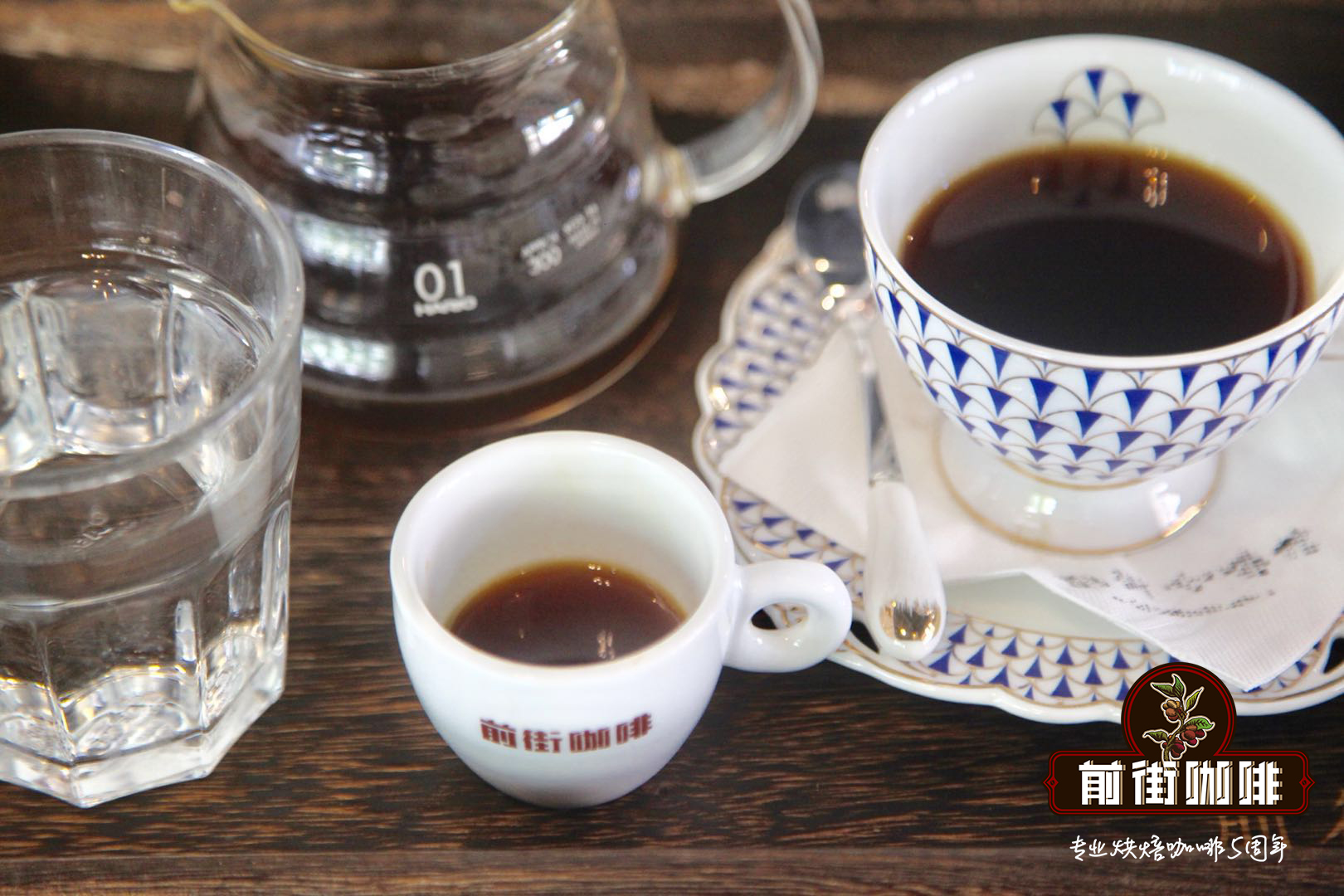What are the characteristics of Honduran coffee? What is the grading standard in Honduras?

Professional coffee knowledge exchange more coffee bean information please follow the coffee workshop (Wechat official account cafe_style)
The taste of coffee beans in Central and South America is characterized by overall balance. Today, the editor introduces to you that this Honduran coffee bean is characterized by high sweetness and soft acidity.
Speaking of Honduran coffee, many people may feel very strange. Is there coffee in Honduras? In my impression, this is one of the most restless countries in China and the United States, and the current political situation is still very unstable. The only thing that can be connected with it is the world-famous diving resort, the Honduran Blue Cave. Coffee? Will there be coffee production in such a chaotic country? However, it is true that Honduras produces coffee, and the production of coffee is still very high, and the quality of coffee is quite good.
Although it is now a backward and chaotic country, this small Central American country is also a region of Mayan civilization, with many relics of Mayan civilization and beautiful tropical seaside scenery. If it were not for such a turbulent situation, it will certainly become a tourist destination. Had it not been for such a turbulent situation, the coffee here would have been better.
Honduran coffee comes from El Salvador. At first coffee production was in a state of unavoidable heat until the frost in Brazil in 1975. At that time, Brazil was badly hit and coffee production plummeted, while Honduras took the opportunity to "take the top". Coffee production soared from 500000 bags to 1.8 million bags and was ransacked. It was only after that that coffee production in Honduras really developed. Honduras now ranks second in coffee exports in China and the United States (second only to Guatemala), and coffee is mainly exported to the United States and Germany.
What is there to miss about coffee in this turbulent country? Honduran coffee does not have very distinctive characteristics. Its biggest feature is that the overall taste is rich and well-balanced.
Medium or shallow acidity, giving the impression of obvious but not strong. Sometimes it has a beautiful floral or fruity aroma (generally speaking, beans produced in different regions and at different elevations have different performances). It is not at all associated with the unrest of the country. Bitterness and obvious sweetness. The overall taste of Honduran coffee is balanced, sour and bitter are not so strong, and there is a good balance between the two.
San Juan Ciudo is a small village in central Honduras, 40 kilometers northeast of Tegucigalpa, the capital of Honduras. The town is under the jurisdiction of Francisco Morz á n, in addition, Francisco Morz á n includes NuevoRosario,Guacamaya and PlanGrande, with a total population of about 1400.
Although San Juan Theodore is historically famous for its mineral deposits, it is now highlighted by its location in the buffer zone of LaTigra National Park, a rainforest ecosystem and the first national park in Honduras. The park acts as a huge reservoir, providing domestic water for 500000 residents of the capital.
Because Honduras is located in the tropics, the temperature change in San Juan Theodore is small throughout the year. Therefore, the so-called winter is actually the rainy season, while the so-called summer is actually the dry season. In the tropics, altitude has a greater effect on temperature than the duration of precipitation in a year. San Juan Seto is located more than 1239 meters above sea level, making the temperature slightly cooler all the year round. In summer (March-June), the maximum temperature is usually about 26C, while the average minimum temperature is about 18C. The highest average temperature in winter is 20 ℃ and the lowest is about 14 ℃.
The modern economy of San Juan Seto is largely dependent on agriculture, most of which is small-scale coffee production, and its climate and altitude are very conducive to the production of high-quality coffee beans. COMISAJUL, a partnership of hundreds of small coffee growers in central Honduras, is located in San Juan Theto. COMISAJUL is a cooperative organized by hundreds of coffee farmers in the San Juan Heido region, where coffee is grown in mountains 1450-1550 meters above sea level and shaded by bananas, avocados, papayas and other fruit trees. Coffee farmers pick ripe fruits by hand during the harvest season, wash them and then dry them in the sun. The fermented water with coffee peel and pulp produced by water washing is collected and used as fertilizer for coffee trees. This batch of coffee tastes very clean, high sweetness, very soft acidity, with the flavor of milk chocolate.
The first contact with Honduras coffee raw beans is CS grade, now the most contact is CS grade, because CS grade planting altitude is relatively low, coffee raw beans do not have any tonality, very suitable to be used as the base of fine Italian coffee, especially highlighting the flavor of other coffee.
The grading system used in Honduras is similar to that in El Salvador, with planting altitude as the first step of classification and re-classification using mesh size at the same altitude.
Classified by altitude
Grade
Altitude
SHB
(Strictly Hard Growm)
Extreme highland growth
> 1500m
HG (Htyh Grown)
Highland growth
1000m to 1500m
CS (Central Standard)
Central standard
600m to 1000m
Note:
The SHG grade accounts for about 12% of the national output, the SHG HG grade accounts for about 78% of the national output, and the CS grade accounts for 10% of the national output. Although the output of CS is relatively low, the neutral nature of its flavor is favored by many commercial bakers.
Classify according to defects
European standard
(EP: Euro Prepation)
After the electronic color selection is screened out, the further screening is carried out by hand.
American standard
(USP: US preparation)
After mechanical cleaning, electronic selection is carried out.
Important Notice :
前街咖啡 FrontStreet Coffee has moved to new addredd:
FrontStreet Coffee Address: 315,Donghua East Road,GuangZhou
Tel:020 38364473
- Prev

How about coffee at Jensen Manor in Panama? what kind of coffee is champagne in the coffee world?
Professional coffee knowledge exchange more coffee bean information Please follow the coffee workshop (Wechat official account cafe_style) often when guests come to Qianjie Coffee, they will ask us, what is Jensen Manor? Why have you never heard of it? About Jensen Manor, this is actually a very powerful manor in Panama! Just because I have never entered the Chinese market before, only do the European and American markets.
- Next

From Costa Rica Honey Coffee | Costa Rican Bach Coffee | musician Coffee
For more information on coffee beans, please follow the Coffee Workshop (Wechat official account cafe_style) Republic of Costa Rica (Repblica de Costa Rica), a republic in Latin America bordering Nicaragua to the north and Panama to the south, the first country in the world without an army, with its capital in San Jose. Costa Rica is the second youngest in Central America.
Related
- Does Rose Summer choose Blue, Green or Red? Detailed explanation of Rose Summer Coffee plots and Classification in Panamanian Jade Manor
- What is the difference between the origin, producing area, processing plant, cooperative and manor of coffee beans?
- How fine does the espresso powder fit? how to grind the espresso?
- Sca coffee roasting degree color card coffee roasting degree 8 roasting color values what do you mean?
- The practice of lattes: how to make lattes at home
- Introduction to Indonesian Fine Coffee beans-- Java Coffee producing area of Indonesian Arabica Coffee
- How much will the flavor of light and medium roasted rose summer be expressed? What baking level is rose summer suitable for?
- Introduction to the characteristics of washing, sun-drying or wet-planing coffee commonly used in Mantenin, Indonesia
- Price characteristics of Arabica Coffee Bean Starbucks introduction to Manning Coffee Bean Taste producing area Variety Manor
- What is the authentic Yega flavor? What are the flavor characteristics of the really excellent Yejasuffi coffee beans?

